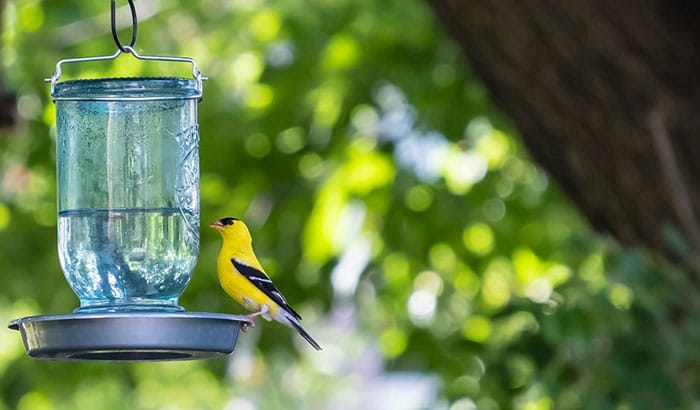
Bird water feeders are essential for providing a vital resource to our feathered friends, especially during hot and dry weather conditions. While there are various bird water feeders available on the market, making your own can be a rewarding and cost-effective option. In this article, we’ll explore the importance of bird water feeders, discuss the types available, and provide a step-by-step guide on how to make one at home using simple materials and tools.
I. Introduction
Bird water feeders play a crucial role in supporting the health and well-being of birds by providing them with access to clean and fresh water for drinking and bathing. These feeders come in various designs, ranging from simple containers to elaborate fountain-style setups. Making your own bird water feeder allows you to customize the design to suit your backyard and attract a diverse range of bird species.
II. Materials and Tools Needed
Essential Materials
- Container Options: Choose a suitable container for holding water, such as a shallow dish, bowl, or tray. Avoid containers with deep sides that may pose a drowning risk to small birds.
- Perch and Platform Materials: Select sturdy materials for perches and platforms, such as wooden dowels, branches, or PVC pipes. Ensure that they are non-toxic and safe for birds to perch on.
Required Tools
- Cutting Tools: You’ll need cutting tools such as a drill with various drill bit sizes, a hole saw, or a jigsaw to create openings in the container and attach perches.
- Assembly Tools: Gather basic assembly tools such as screws, nuts, bolts, and waterproof adhesive for securing components together.
III. Step-by-Step Guide to Making a Bird Water Feeder
Container Preparation
- Drilling Holes for Perches: Using a drill with an appropriate drill bit size, carefully drill holes near the rim of the container to insert perches. Space the holes evenly around the perimeter to provide ample space for birds to access the water.
- Adding Drainage Holes: To prevent water from stagnating and becoming a breeding ground for mosquitoes, drill small drainage holes in the bottom of the container. Ensure that the holes are large enough to allow water to flow out but small enough to prevent seeds or debris from escaping.
Installing Perches and Platforms
- Securing Perches: Insert the chosen perches into the drilled holes, ensuring they are firmly seated and stable. Use waterproof adhesive or screws to secure the perches in place if necessary, ensuring they can support the weight of visiting birds.
- Attaching Platforms: If desired, attach additional platforms or landing areas around the container to provide birds with additional space for perching and bathing. These platforms can be made from sturdy materials such as wood or plastic and should be securely fastened to the container.
Filling and Placement
- Adding Water: Fill the container with clean, fresh water to the desired depth, ensuring that it is shallow enough for birds to safely access. Monitor the water level regularly and refill as needed to keep it fresh and inviting.
- Choosing an Ideal Location: Place the bird water feeder in a quiet and sheltered area of your backyard, away from potential hazards such as predators or excessive human activity. Ensure that it is easily accessible to birds and positioned near natural cover such as trees or shrubs for added safety.
IV. Maintenance and Tips for Bird Water Feeders
Regular Cleaning
- Cleaning Schedule: Establish a regular cleaning schedule for the bird water feeder to prevent the buildup of algae, bacteria, and debris. Clean the container and perches at least once a week, more frequently during hot and humid weather.
- Cleaning Methods: Use a mild detergent and a scrub brush to clean the container thoroughly, rinsing it well with clean water afterward. Scrub the perches and platforms to remove any dirt or droppings, ensuring they are clean and sanitary for visiting birds.
Preventing Contamination
- Avoiding Stagnant Water: To prevent water from becoming stagnant, empty and refill the bird water feeder regularly, especially during hot weather when evaporation rates are high. Consider installing a small fountain or dripper to keep the water moving and aerated.
- Monitoring for Algae Growth: Keep an eye out for signs of algae growth in the water, such as green or slimy patches. If algae are present, empty the container, scrub it clean, and refill it with fresh water to prevent contamination and maintain water quality.
Attracting Birds
- Placement Considerations: Position the bird water feeder near bird-attracting features such as feeders, birdhouses, or natural food sources to maximize its appeal to local bird species. Create a welcoming environment with native plants and trees that provide food, shelter, and nesting sites.
- Supplemental Food Sources: Supplement the water feeder with additional food sources such as bird feeders stocked with seeds, suet, or mealworms to attract a diverse range of bird species. Offering a variety of food and water sources ensures that birds have access to essential resources year-round.
V. Conclusion
Making your own bird water feeder is a rewarding and enjoyable DIY project that not only benefits your backyard birds but also contributes to bird conservation efforts. By providing clean and fresh water in your yard, you can attract a diverse array of bird species and create a wildlife-friendly habitat that supports biodiversity and ecological balance. With proper maintenance and thoughtful placement, your homemade bird water feeder will serve as a valuable resource for birds and a source of enjoyment for birdwatchers for years to come.




